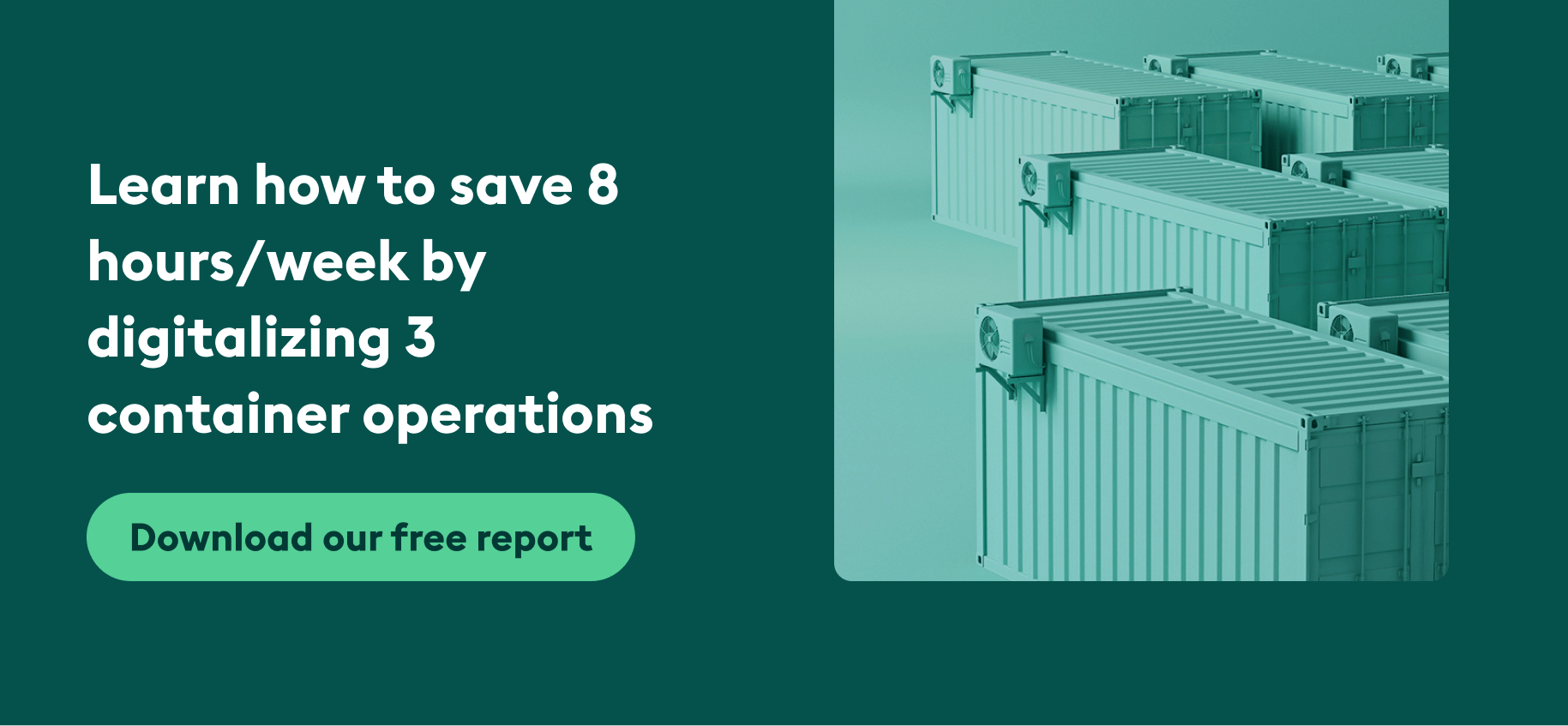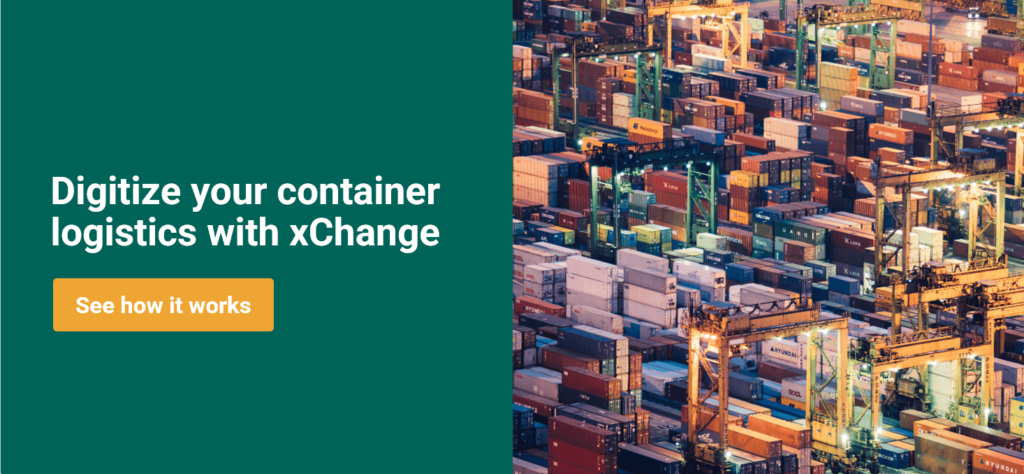Digital solutions for logistics are set to play a key part in the industry’s evolution and transformation. But what exactly do all these different digital solutions mean? You will get the answer to that right here – without making your head spin.
While the pandemic sent a short-term shockwave through the industry, it is set to recover and continue to grow. According to Statista, the global container shipping market is forecast to grow at a compound annual growth rate (CAGR) of over four percent until 2027. The market is also expected to grow from 8.7 billion U.S. dollars in 2019 to 12 billion U.S. dollars in 2027.
The sheer volume of trade taking place makes it inefficient to continue relying on conventional approaches. Digitalization and technology are reshaping industries everywhere, and shipping is no different.
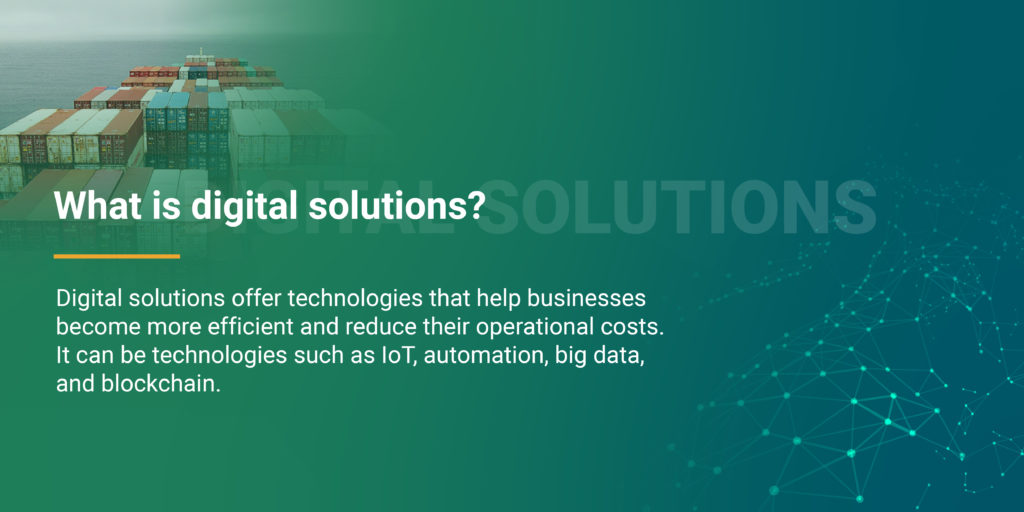
What the pandemic has made clear is one thing: the need for the logistics industry to operate in a more efficient and lean manner. Future-proofing operations and managing risks will be crucial for players who want to survive. According to a 2020 report by UNCTAD (United Nations Conference on Trade and Development), this will require “greater visibility and agility of door-to-door transport operations.” In the years ahead, digital solutions for logistics will play a key role in driving that transparency and optimized operations.
Why use digital solutions for logistics?
The pandemic has underscored the case for digitizing shipping operations and reducing paper and in-person interactions. It’s also highlighted the risks of going digital – namely, cybersecurity risks. Without addressing these risks, supply chains could be critically affected. Yet the potential upside of digital solutions far outweighs the risks. And risks can always be managed.
These are the four digital solutions we’ll go over:
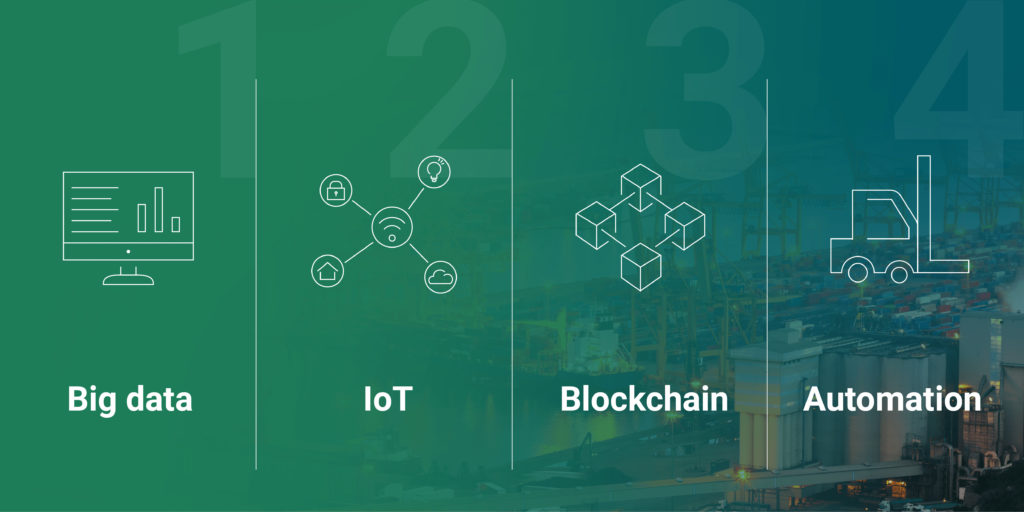
Now, let’s have a look at some of the reasons businesses turn to digital solutions for logistics.
Drive greater efficiency and transparency
Digitalization of documents simplifies transactions, reduces costs, improves customer experience, and increases operational efficiency. With digital platforms, users can easily:
- Find available shipping options,
- Book multiple modes of transportation in a single transaction,
- Receive instant confirmation, and
- Track multiple shipments on a single platform.
Improve relationships with partners
Digitizing logistics operations not only increases efficiency. It also improves negotiation, coordination, and planning across different parties, locations, and time zones.
Prices can be negotiated and shipments booked via platforms like Container xChange in an organized way. With clear information and well-documented history of all interactions, there is less back and forth between parties.
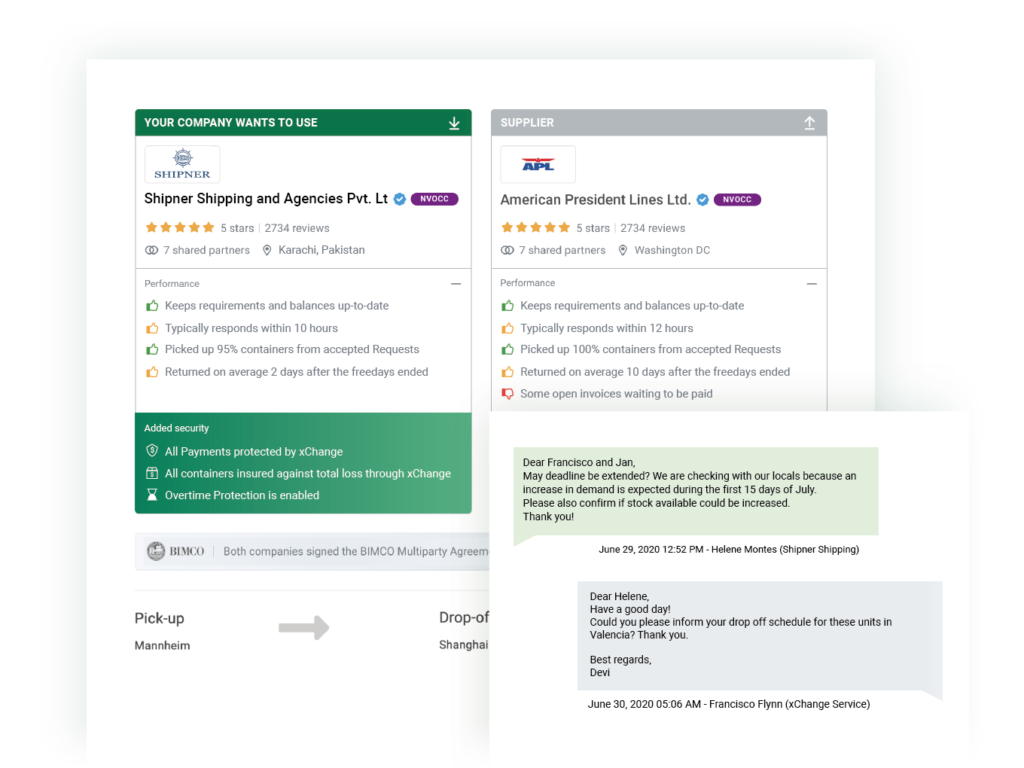
Colleagues that may be involved in the same shipment or deal will have access to the same transparent data.
Looking to buy, sell, or lease containers? Reach 500+ partners in 2,500 locations and find the best option for your needs. Track your containers in real-time, all within the same platform. Click the banner below to find out how xChange can reduce your manual workload and increase your efficiency.
Increase efficiency and safety
With limited port and warehouse space, it is important to keep turnaround times short when moving containers to accommodate higher volumes. This is where automation comes in.
Nearly 40 semi or fully automated container terminals are operating today, and many more are underway. Automation has reduced manual labor and processes while operating day and night. This has helped minimize errors, increase efficiency, increase safety for workers, and also contribute to energy savings and lower carbon emissions.
Optimize operational costs
Real-time, digital container tracking also solves one of the biggest challenges in the industry today: a shortage of containers and container imbalances across the world.
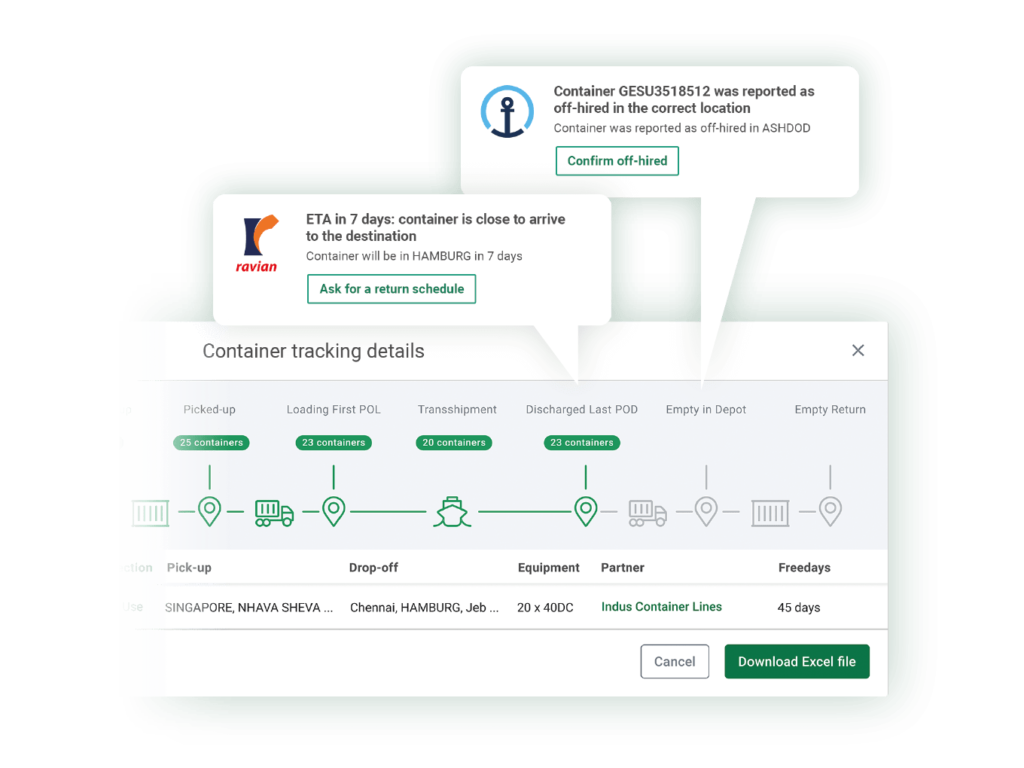
Disruptions to international trade and China’s boom in exports mean that containers are constantly leaving Asia and getting stuck elsewhere. Prices of containers from China have increased by 300% due to the shortage. Meanwhile, containers elsewhere sit idle and empty, often incurring demurrage and detention costs, as there is just not enough cargo to ship back to Asia.
As demurrage and detention costs rise, container owners are forced to move their containers empty. Boston Consulting Group estimates that one in every three containers is moved empty. This costs the industry up to $20 billion annually just in repositioning costs. Such inefficiencies stem from decentralized data that can be integrated with digital solutions.
Through data, it’s easy to see where the surpluses and shortages are, on aggregate. Container users can easily find and lease containers from owners who need their containers moved. Prices can be quickly negotiated with readily available, transparent information. The results? Clients incur less demurrage and detention costs. Optimization of container usage also reduces idling at ports and incurs further savings.
Want to avoid repositioning costs and demurrage and detention costs? Click the banner below to find out how Container xChange can help.
Digital solutions for better logistics performance
AI, ML, and Big Data
Application programming interfaces (APIs) are software connectors or intermediaries that connect data sources between different applications. The benefit of APIs is their ability to pull in big data from different sources into a centralized platform.

This data can then be used for automating routine tasks. With the help of artificial intelligence (AI) and machine learning (ML), data can be easily sorted, prioritized, and acted upon. This includes:
- Tracking high volumes of freight in real-time;
- Extracting relevant information about shipments to automatically populate important forms;
- Calculating estimated delivery times, taking into account holidays, container specifications, and shipping routes; and
- Getting real-time notifications about each shipment/container instantaneously, such as ETAsWhat is estimated time of arrival? Estimated time of arrival, commonly known as ETA, is a frequently used term globally to denote the time of coming. In the shipping & logistics industry, it is ... More, delay warnings, and rollovers.
Used in combination, these digital solutions reduce many tasks that used to be done manually.
Platforms like Container xChange use big data and AI/ML to facilitate smart matching of container owners with individual or corporate container users.
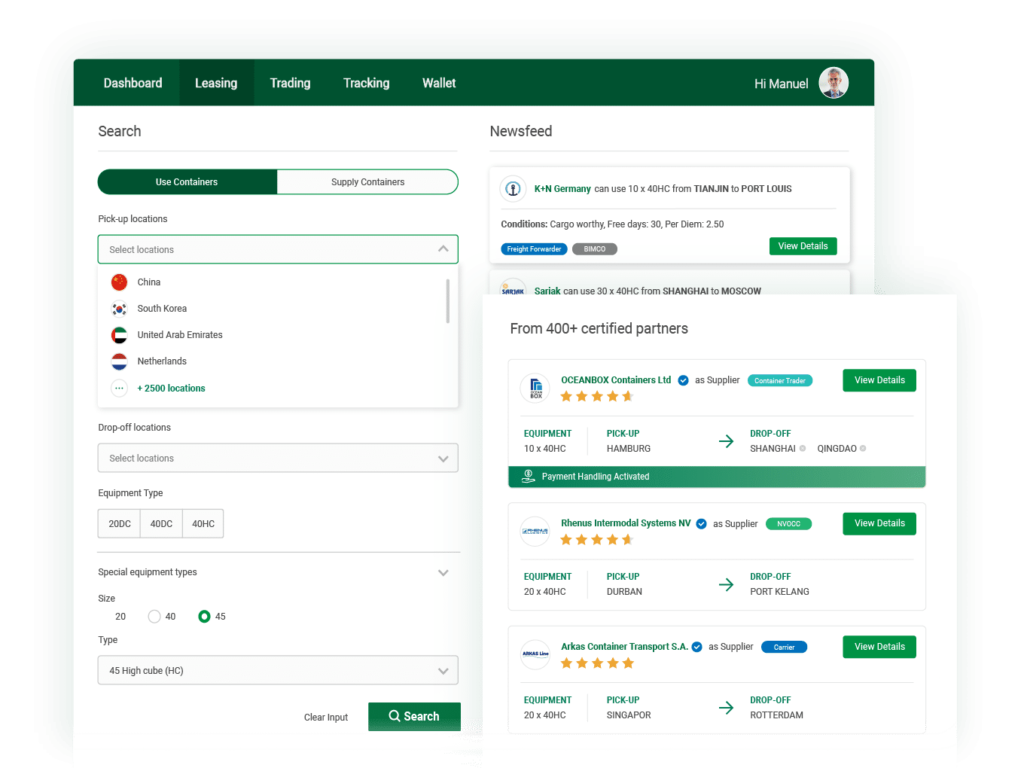
Users get the best prices for their location, while owners get help repositioning their boxes to preferred locations. Additionally, smart container tracking allows clients to track the status of their containers on a single platform.
The potential of big data and AI doesn’t stop there. Through predictive analytics, shippers can predict weather patterns or optimize shipping routes, for faster and more efficient transit times. By forecasting demand and supply, shippers can be in better control of their shipping needs. They don’t have to be held hostage by the availability of containers or limited information. This helps shippers manage their risks better and deploy containers more efficiently.
IoT tracking and tracing
The advent of the Internet of Things (IoT) has enabled tracking and tracing across industries, including in shipping. IoT tracking devices can be used throughout the logistics chain – on containers, vehicles, and even the freight itself. This enables owners to track, store, and analyze data at any part of the supply chain.
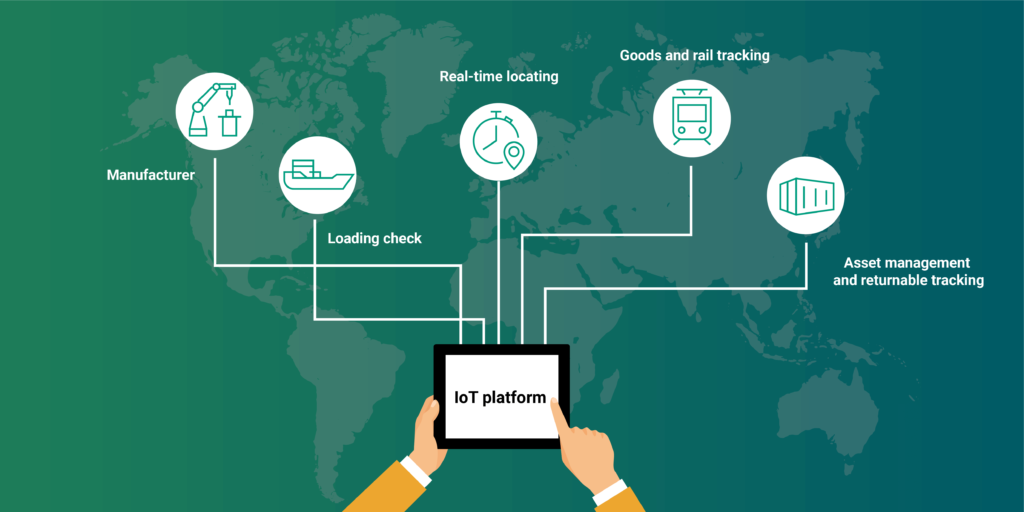
Data gathered from IoT enables owners to identify weaknesses in the supply chain, optimize operations, and understand consumer needs.
Uses of IoT systems include:
- Capacity sensing: Detecting and communicating open spaces in a warehouse for transportation systems.
- Independent planning: Detecting events such as accidents to determine the next time-saving delivery route.
- Optimization: Mapping the most fuel-efficient delivery route to optimize costs.
- Energy management: Programming lighting, heating, and cooling within delivery vehicles or facilities to conserve energy.
- Fault-detection: Monitoring transportation fleets for faults, maintenance needs, and irregularities.
Blockchain: Reliable and immutable real-time data
Blockchain is a type of Distributed Ledger Technology (DLT) that describes the tech system and rules that allow for data to be accessed and validated. It also allows for the record (or ‘ledger’) of data to be updated – by many people at the same time. What makes this different from other ways of recording data is that entries made cannot be changed once they have been validated.
DLT gained mainstream awareness thanks to Bitcoin. Today, its use has spread beyond cryptocurrency and has become a buzzword in the technology world. Its features hold tremendous potential for a wide range of industries, including the shipping and logistics sectors.
When we look at the shipping industry and blockchain, this is how blockchain creates more efficiency in the supply chain:
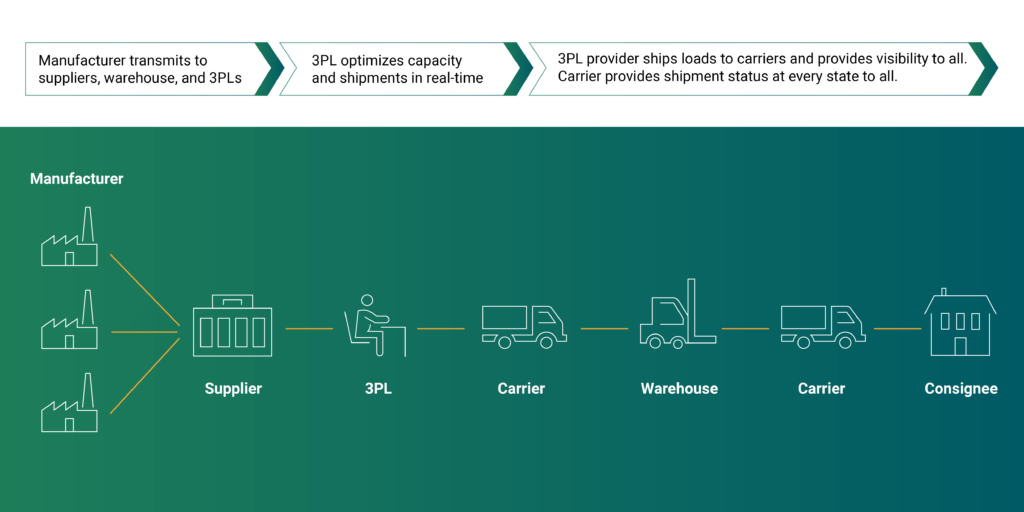
Some of the ways blockchain can benefit the shipping industry include:
- Speeding up administrative work by automating agreements using ‘smart contracts’. These contracts execute automatically when certain conditions are met – say for instance, that two parties agree on the price of a shipment. Once the contract has been executed, it cannot be changed. This provides all stakeholders with the confidence that the information is reliable while reducing manual paperwork.
- Providing a secure, auditable trail of all shipments. Because records can’t be manipulated, they are easier to audit while meeting compliance requirements. It also builds trust among stakeholders and reduces the risk of fraud.
- Providing reliable, updated data in real-time. The ledger can be added to by all parties who can access it, by humans or through automation. Because the technology is distributed, blockchain can serve as a single source of truth for any updates in the movement of deals and shipments, end to end.
Leading logistics players including Maersk and APL are already beginning to capture value from blockchain by creating blockchain-based platforms for collaboration and documentation.
Autonomous, connected vehicles and automation
Self-driving cars have generated a lot of buzz in recent years. And autonomous postal trucks have already been tested on US roads. But as people eagerly wait for driverless cars to hit the roads, ports have already been leading the way in their use of autonomous vehicles.
Already, autonomous forklifts are commonplace in modern warehouses and ports. In more recent years, a wider range of fully and semi-automated vehicles have proliferated in ports. These include straddle carriers and sprinters, automated terminal trucks, and automated guided vehicles (AGVs) for horizontal transport in container yards.
Another benefit of having smart, connected vehicles is their ability to optimize modern logistics. This includes being able to detect when fuel levels are low, accelerate and brake more efficiently while navigating around other autonomous vehicles, and many other use cases. As most industry insiders agree, it’s just a matter of time before all major container terminals in the world get fully automated.
With the range of digital solutions for logistics available today, the industry is set to get more efficient. Players that don’t adapt will soon be left behind by the competition. During uncertain times, staying agile and responsive is crucial – with solutions like the ones we’ve highlighted.
Digitize your shipping and container operations with xChange
Reduce manual workflows, increase efficiency, and save costs – with everything centralized in one platform. Click the banner below to get started today.





